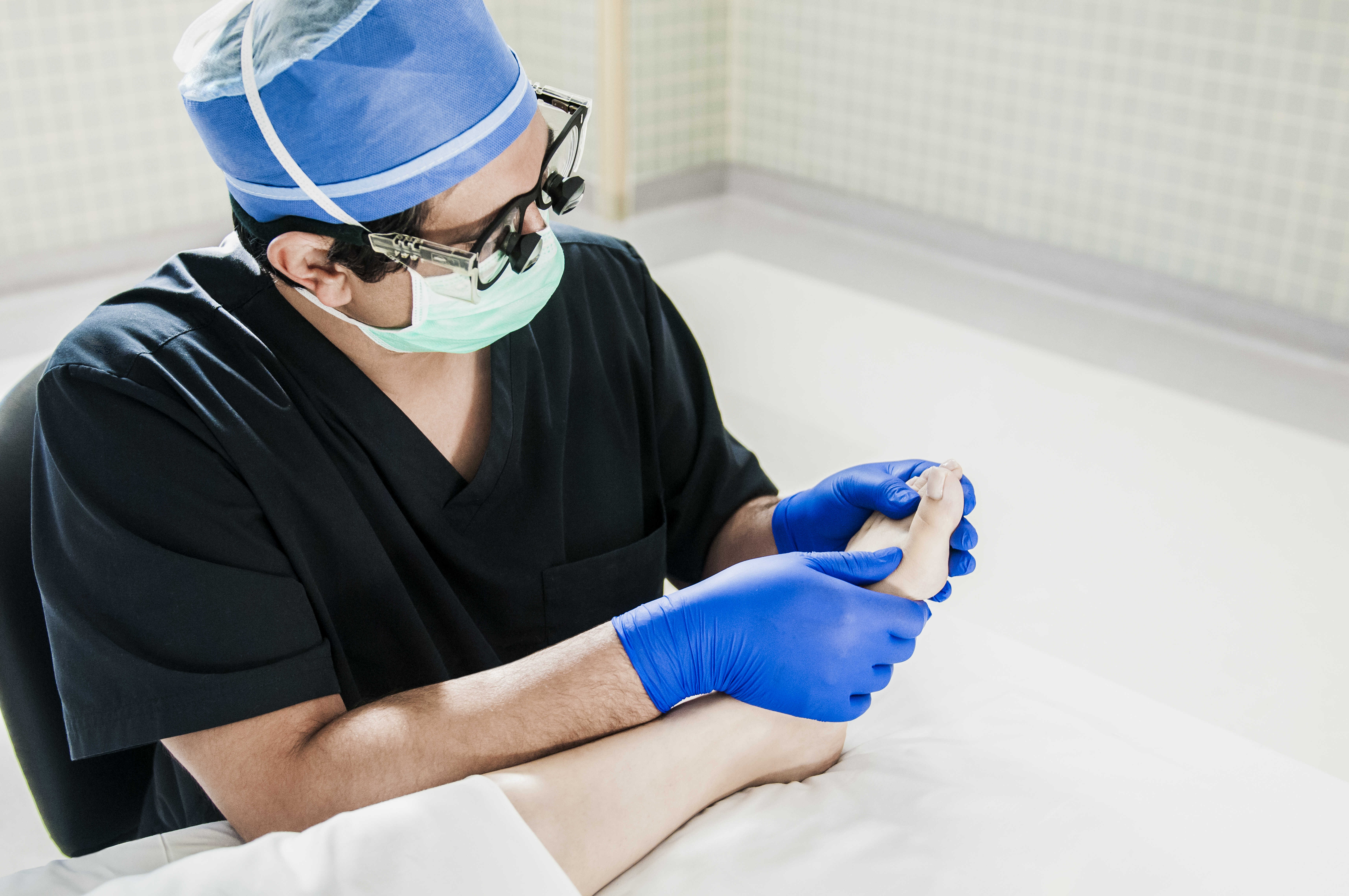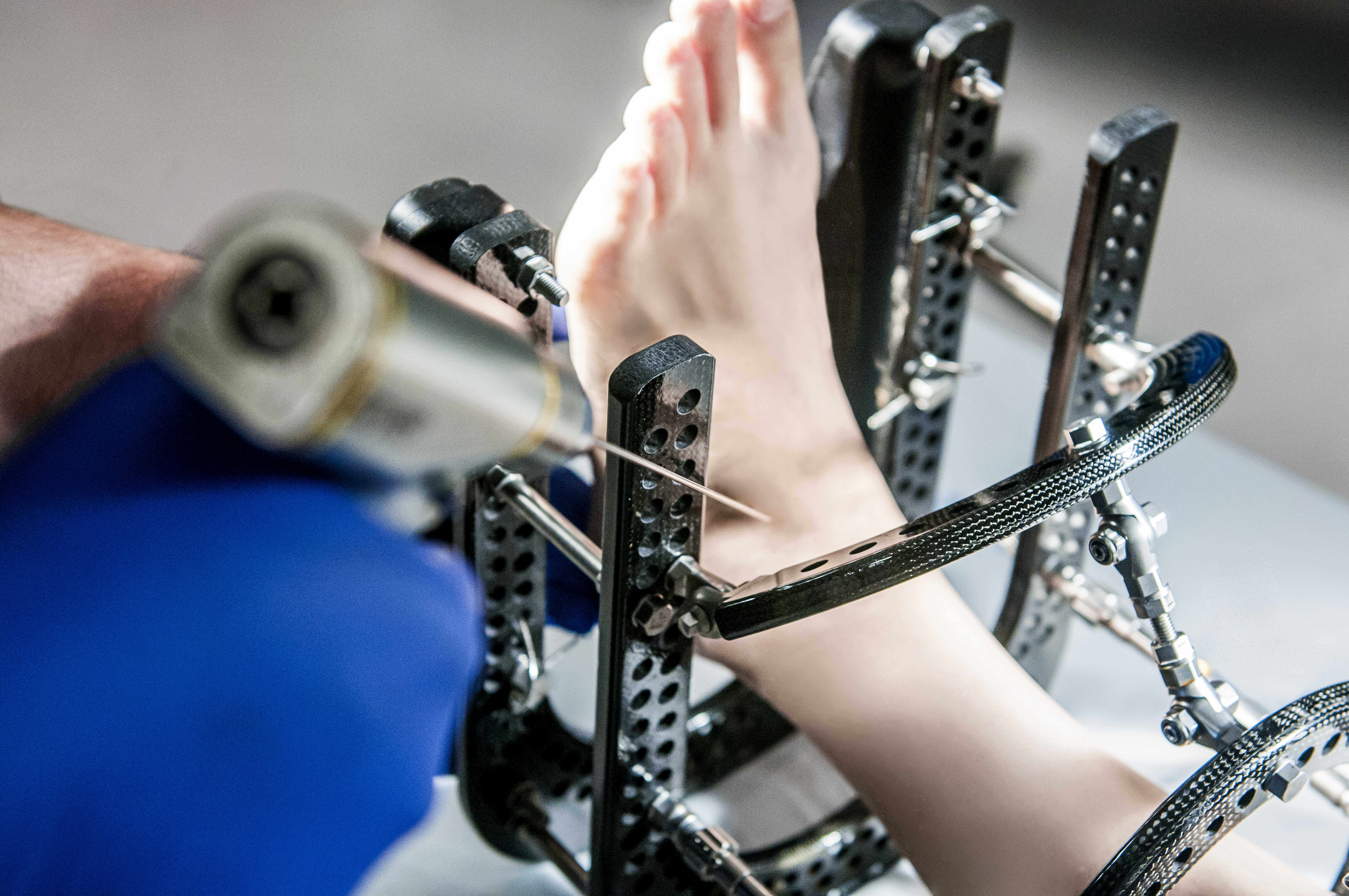For many people with bunions, surgery is an appropriate option when non-surgical treatments have failed to provide adequate pain relief. Bunion surgery—generally referred to as a bunionectomy—is designed to remove the “bump” of the bone, correct the changes in the bony structure of the foot, and correct soft tissue changes that may also have occurred. The goal of bunion surgery is to reduce pain, improve function and decrease deformity to enable the patient to resume normal activities. Various types of surgical procedures are available to treat bunions. In selecting the procedure, your surgeon has taken into consideration the extent of your bunion deformity based on x-ray findings, your age, your activity level, and other factors. Two types of procedures, which may be modified somewhat by your surgeon to address your needs, are described below.
Osteotomy for Bunion Correction:
After making an incision over the joint of the big toe to gain access to the bunion or area of osteotomy, the surgeon:
- Removes the bony prominence of the first metatarsal
- Rebalances the soft tissues surrounding the joint
- Makes a cut in the bone in the upper (head) or lower (base) part of the first metatarsal and then realigns the bone
- Inserts some type of fixation hardware, typically screws or pins, to secure the realigned bone
- Closes the incision with stitches and applies a sterile bandage
Arthrodesis for Bunion Correction :
Arthrodesis procedures, also called fusion, involve fusing the joint (placing together and connecting two bones). Fusion may be needed to correct a severe deformity or control excessive motion.
Lapidus Procedure (1st metatarsal-cuneiform joint)
In some people, too much motion can cause bunions to return, making arthrodesis especially beneficial. The result of the fusion is a realigned stabilized metatarsal bone that avoids excessive motion and thereby decreases the risk of the bunion reforming. After making an incision over the big toe joint and first metatarsal-cuneiform joint to gain access to the bunion and the joint, the surgeon:
- Removes the bony prominence by shaving the bone (the first metatarsal)
- Rebalances the soft tissues (ligaments and tendons) around the joint to ensure they push and pull properly
- Cuts an angled piece from the adjacent bone (the cuneiform) and the first metatarsal, and aligns the two bones together
- Inserts fixation hardware to secure the joint where the cuneiform and the first metatarsal meet to allow for fusion
- Closes the incision with stitches and applies a sterile bandage
First Metatarsal Phalangeal Joint Arthrodesis
Depending on the severity of the bunion deformity, fusion of the joint may be necessary.
After making an incision at the top of the joint of the big toe, the surgeon:
- Releases the soft tissue surrounding the joint
- Removes the cartilage in the joint
- Realigns the joint to a corrected position
- Inserts internal fixation to secure the joint to allow for fusion
- Closes the incision with stitches and applies a sterile bandage
Recovery:
Recovery from these procedures generally takes 6-12 weeks. During a portion of this period, weight bearing on the operative foot may not be permitted.



